Whenever a thoughtful, well-written story on fly casting pops up on the web, you can bet that some folks will be incredibly appreciative of the information. They’ll embrace the challenge of becoming better casters and soak up everything there is to learn from the piece.
Others, though, will dismiss fly casting as an unnecessary skill; one that simply isn’t relevant to their trout fishing. They’ll proclaim that they already catch plenty of fish and since “trout-in-the-net” is their metric of choice, fly casting must, of necessity, be overrated.
So who’s right, and who’s wrong? The answer, of course, is “it all depends …”
Poor or mediocre casters who are happy with their on-the-water experiences, and with their angling results, are under no obligation to improve their casting. If they’re satisfied with the status quo, then there’s absolutely no reason they should put any additional effort into their casting.
At the same time, fly fishers who hope to challenge themselves, or who prefer to embrace the beauty and grace inherent in good fly casting — or who simply want to catch trout they wouldn’t otherwise catch— invariably benefit from becoming better casters. If you’re an angler who hopes to improve your casting, here are some points to consider.
Good Casting vs. Poor Casting
As the head of a fly fishing school, I’m always surprised by the number of folks who can’t tell good casting from bad casting, or good form from poor form. It’s really difficult to become a good caster if you don’t know what a good cast looks like. With that in mind, it pays to spend a little time learning to differentiate good casting from poor casting.
A good cast flows gracefully off the tip of the fly rod, creating tight loops that transfer energy more efficiently than wide or open loops. If an angler is fishing a dry fly, then the loops should be reasonably tight. If that same angler is fishing heavy flies, or multiple flies, or if there’s weight on the leader, then he or she may need to open up the loop to avoid tangles. In either case, the shape of that loop should reflect a conscious decision rather than poor mechanics or a lack of casting acumen.
With regard to form, the best casters usually employ a motion that keeps the rod in one plane as they raise and lower their elbow. That’s especially true from 20 feet out to 60 feet, which is our normal trout fishing range. Some of the more common casting problems pop up because people cast solely with their wrist, or pivot at the elbow, or push and pull the rod, or swing their arm back and forth like a barn door.
Of course, even the blind hog finds the occasional acorn and anglers who employ poor form still manage to throw a nice loop every once in a while. From where I sit, though, it’s much better to rely on good form and good timing than pure, unadulterated luck.
Take a minute to watch John Juracek, one of the finest fly casters and fly casting instructors on the planet, in the video below. You’ll note that John’s elbow invariably goes up and down as he casts — preventing tailing loops and wind knots — and that he throws handsome loops that are always under control. John’s video demonstrates what really good fly casting looks like. It also illustrates a mechanically-sound casting stroke; the kind you’ll want to emulate when you’re on the practice field.
Practice
We’ve all heard that “practice makes perfect.” When it comes to fly casting, though, practice by itself isn’t really enough. We need to practice good form, as good form helps build, and lock in, that all-important muscle memory.
How do we do that?
First, consider taking lessons from an instructor like the aforementioned Mr. Juracek. Professionals in any number of sports — golf, baseball, tennis, basketball, skiing, etc. — rely on coaches to help refine their techniques and expand their skills. If we’re really interested in improving our casting and enjoying the sport more, why wouldn’t we take advantage of a pro who teaches fly casting on a regular basis?
If that’s not an option, we can always try to find good fly casting instruction on the internet. (More on that below.) Or we can simply watch excellent casters and do our best to copy their form and mechanics. (You can have a friend or family member video you with a cell phone so you can see what your cast looks like in comparison to a John Juracek, a Steve Rajeff or a Maxine Mccormick.)
At the end of the day, everyone who is interested in expanding their fly fishing prowess should strive to develop good casting form. If we utilize a mechanically-sound casting stroke while practicing our casting for 15 or 20 minutes per week, we’re almost guaranteed positive results.
Bad Advice
Sadly, you don’t have to look far to find bad fly casting advice on the web. Much of the fly casting instruction you’ll run across on YouTube and other video platforms is highly suspect. My rule of thumb is actually pretty simple. Unless someone casts really well in front of the camera, there’s no reason at all to listen to their suggestions. At the same time, if world champion casters like Steve Rajeff, Tim Rajeff or Chris Korich are offering their thoughts, or if casting instructors like John Juracek or Brant Oswald are sharing their hard-earned knowledge, then it pays to listen closely.

Professionals
My personal experience is that most fly casters learn to fly cast from friends or relatives, or perhaps from fly fishing guides and/or fly shop employees. While there are certainly some excellent instructors out there, most of the folks you’ll run across are no more qualified to teach fly casting than they are to teach skiing or help you develop a great golf swing.
Top-notch instructors make it clear from the very start what they’re trying to achieve. They’ll walk you through an effective cast and help you distinguish a good loop from a poor one. Then they’ll explain the basic casting motion, and have you practice that motion without a rod before you ever start casting.
At the end of the day, a first rate instructor can make fly casting seem simple and understandable. They should also give you the tools to diagnose your personal casting issues and make adjustments when necessary.
In Conclusion
I should be clear. You don’t need to be a great fly caster to catch fish or to have a wonderful time on the water. You don’t even need to be adequate. I’ve seen some pretty terrible fly casters over the years, and any number of them still caught a few trout and had some fun.
What I can say for sure, though, is that most of us can’t maximize our angling talents or derive the most possible enjoyment from our fly fishing without becoming proficient casters. Good casting connects us to the true grace and beauty of our sport. It also increases our success and allows us to embrace new challenges.
Go back and watch John Juracek’s video again. And this time, pay attention to the fact that he casts both left-handed and right-handed. Notice how he controls the line. Watch his elbow, and his wrist, and look at the way his entire arm pivots at his shoulder. See if you can tell when he applies power to his stroke. Oh, and remember to enjoy a true master at work, as it’s not always easy to find good fly casting on the web. With a little luck, John’s artistry will inspire you to practice your own casting. To quote Mr. Juracek, “Good casting will expand and deepen your experience, helping you discover the many wonderful nuances and subtleties hidden beneath the surface of this sport."






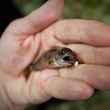




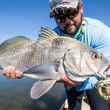




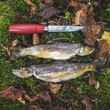




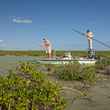
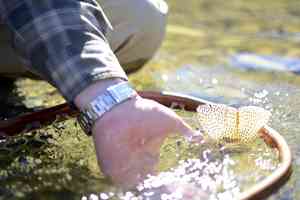
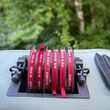

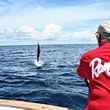
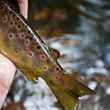


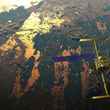
Comments